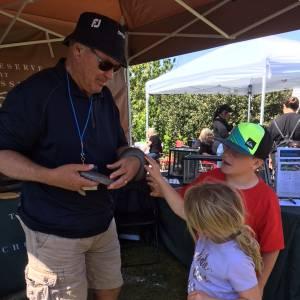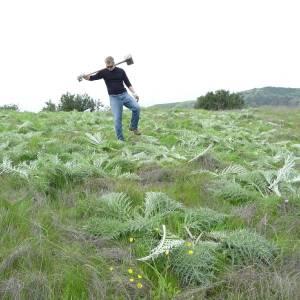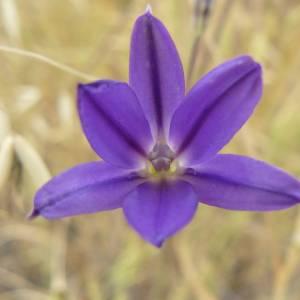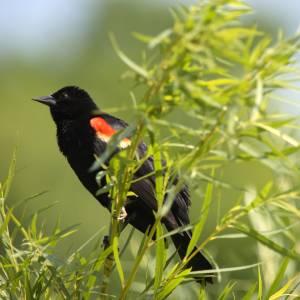The goal of The Nature Reserve at Rancho Mission Viejo has always been to preserve and enhance the surrounding land for ecological, educational, charitable and recreational uses. Following the wisdom of Marguerite “Daisy” O’Neill of The Ranch Family, the guiding principle is to “Take care of the land and the land will take care of you.” And over time, The Nature Reserve land will expand to over 20,000 acres of protected natural splendor.


Community Outreach
We seek to inform the general public about The Nature Reserve through participation in community events such as local fairs and fiestas, county parks, green days and similar conservation themed events. The Nature Reserve’s Community Outreach can range from Bugs and Butterflies at Riley Park to Earth Day at Panhe in San Clemente, Ocean Festivals to city celebrations – just to name a few.
We also conduct programs for groups such as Boy and Girl Scouts, conservation and civic organizations. We have taken our show on the road and given talks with hands-on activities to local libraries and school science nights.
Community outreach is an important component in The Nature Reserve’s Mission. It is a way to get the word out and raise environmental awareness and understanding by informing and educating community members. The public also enjoys meeting our animal ambassador Rosy, the Rosy Boa Snake.

Stewardship
Within The Nature Reserve the following habitats are termed “Conserved Vegetation Communities”and are actively managed and monitored according to the Habitat Reserve Management and Monitoring Program:
- Coastal Sage Scrub
- Riparian
- Open Water
- Chaparral
- Freshwater Marsh
- Streamcourses
- Grassland
- Alkali Meadow
- Woodland & Forest
In order to protect these vegetation communities we carry out certain management actions such as invasive species control to ensure that non-native invasive species do not degrade the value of these communities. Currently our focus is removal of artichoke in The Nature Reserve and removal of giant reed in San Juan Creek, a Reserve riparian resource.
In addition to conducting stewardship which maintain or enhance habitat value, we also conduct stewardship activities to ensure the safety of our visiting patrons. These activities include making sure that trails are clear of vegetation, constructing bridges over ravines and waterways, installing signs and erecting fencing.

Monitoring
Within The Nature Reserve the following species are termed “Covered Species” and are actively managed and monitored according to the Habitat Reserve Management and Monitoring Program. Of these species several are listed under the federal Endangered Species Act as either threatened (FT) or endangered (FE) or listed under the California Endangered Species Act as endangered (SE). Monitoring priorities and protocols are established in consultation with U.S. Fish and Wildlife Service.
Birds
- Burrowing Owl
- Coastal Cactus Wren
- Coastal California Gnatcatcher (FT)
- Cooper’s Hawk
- Grasshopper Sparrow
- Least Bell’s Vireo (FE/SE)
- Long-eared Owl
- Southwestern Willow Flycatcher (FE/SE)
- Tricolored Blackbird
- White-tailed Kite
- Yellow-breasted Chat
- Yellow Warbler
Amphibians
- Arroyo Toad (FE)
- Western Spadefoot Toad
Fish
- Arroyo Chub
- Threespine Stickleback
Invertebrates
- Riverside Fairy Shrimp (FE)
- San Diego Fairy Shrimp (FE)
Reptiles
- California Glossy Snake
- Coach Patch-nosed Snake
- Northern Red-diamond Rattlesnake
- Red Coachwhip
- Orange-throated Whiptail
- "San Diego" Horned Lizard
- Southwestern Pond Turtle
Plants
- California Scrub Oak
- Chaparral Beargrass
- Coast Live Oak
- Coulter’s Saltbush
- Many-stemmed Dudleya
- Southern Tarplant
- Thread-leaved Brodiaea (FT/SE)
Management and Monitoring Reports

Research
We participate in programs that study region-wide environmental questions. Some of the research projects that The Nature Reserve has been involved with to date include the study of disease in mountain lions, the migratory patterns of red-tailed hawks, the reproductive output of barn owls, and the genetics of fairy shrimp. We also participate in the annual Audubon Society Christmas Bird Count and regular NABA butterfly counts.
